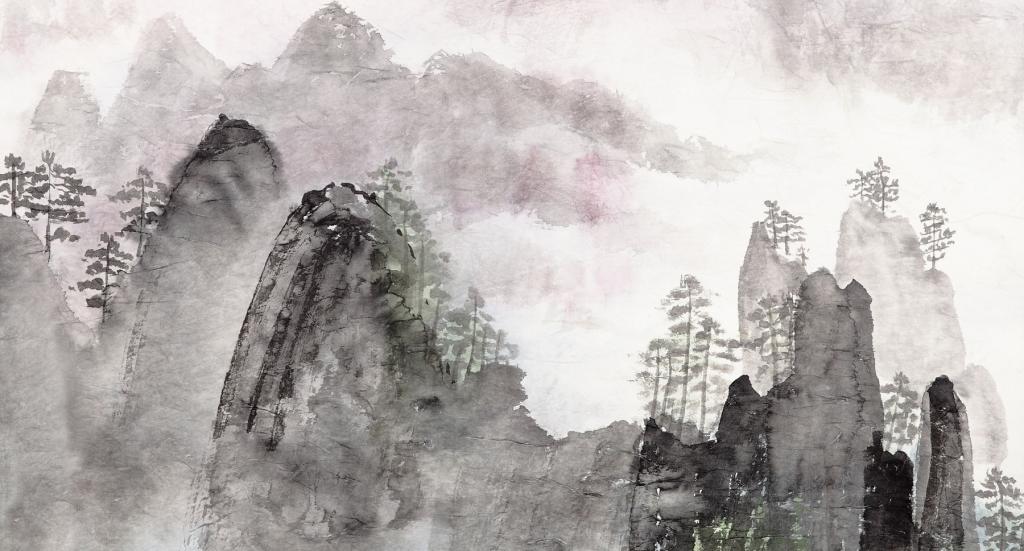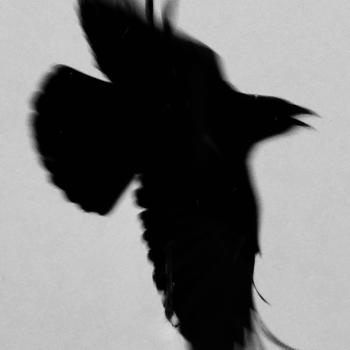
Why nineteen ways to translate one poem?
As Eliot Weinberger explains in his 19 Ways of Looking at Wang Wei (thanks, Joe Daichō, for =this wonderful book!), “Great poetry lives in a state of perpetual transformation, perpetual translation: the poem dies when it has no place to go.” (p. 3)
Just like a great kōan!
The newest edition of Weinberger’s book, by the way, has twenty-nine translations of Wang Wei’s (701-761 C.E.) four-line poem! As an aside, let me give you a tip: you will be hard pressed to find a better stocking-stuffer for your geekus maximus Zen family member or self. Trust me on this. You and/or your geeky loved-one will especially enjoy this book if you like repetition, careful attention to detail, and subtle variations on a theme, served with a bit of snark. If you are still reading this, you are probably at least this geeky. And maybe snarky. No offense intended.
Wang Wei, on the other hand, is widely recognized as one of the truly great poets of ancient China. Many have tried to express the heart of the simple poem under consideration, and many (including your’s truly) have spent late nights puzzling about some of the thorny issues that arise. Here is what the little bugger looks like in ideographs:
鹿 柴
空 山 不 見 人
但 聞 人 語 響
返 景 入 深 林
復 照 青 苔 上
Here is one popular translation
Deer Park
Hills empty, no one to be seen
We hear only voices echoed —
With light coming back into the deep wood
The top of the green moss is lit again.
— G. W. ROBINSON, 1973 (Robinson, Poems of Wang Wei)
And Weinberger’s snarky thoughts about Robinson’s labors:
“Robinson’s translation … is, unhappily, the most widely available edition of Wang in English. In this poem Robinson not only creates a narrator, he makes it a group, as though it were a family outing. With that one word, we, he effectively scuttles the mood of the poem. Reading the last word of the poem as top, he offers an image that makes little sense on the forest floor: one would have to be small indeed to think of moss vertically. For a jolt to the system, try reading this aloud.” (p. 31 – emphasis added)
I agree – the Robinson translation is clunky. But here’s a translation that Weinberger (and me too) likes better by the wonderful Gary Snyder:
“Empty mountains: no one to be seen.
Yet — hear — human sounds and echoes.
Returning sunlight enters the dark woods;
Again shining on the green moss, above.” (p. 45)
Note that in Snyder’s version there is no “we” and the woods are dark. However, there is a problem with the moss being above, and also how Snyder has “above” dangling out there on its own right at the end. Snyder explained, “The reason for ‘. . . moss, above’ . . . is that the sun is entering (in its sunset sloping, hence ‘again’ — a final shaft) the woods, and illuminating some moss up in the trees. (NOT ON ROCKS.)”
The trouble with 上
It gets down to how you imagine the scene and how you see 上 here. Pronounced “shàng,” 上 can be rendered “top,” “superior,” “highest,” “go up,” “send up,” or “upon.”
This last line of the poem with the上 character at the end is what I found most difficult to grok.
Translation traumas like this are not unusual. Weinberger points out that “…A single character may be noun, verb, and adjective. It may even have contradictory readings: character 2 of line 3 is either jing (brightness) or ying (shadow). Again, context is all. Of particular difficulty to the Western translator is the absence of tense in Chinese verbs: in the poem, what is happening has happened and will happen. Similarly, nouns have no number: rose is a rose is all roses.” (p. 9)
And further, “Contrary to the evidence of most translations, the first-person singular rarely appears in Chinese poetry [or kōan]. By eliminating the controlling individual mind of the poet, the experience becomes both universal and immediate to the reader.” (p. 10)
Are there similarities to kōan and translating kōan? You bet. Here is Weinberger quoting Octavio Paz to summarize a lot of classical Chinese poetry (and kōan) translation: “The characteristics of Chinese poetry: universality, impersonality, absence of time, absence of subject.” (p. 33)
The relationship of translation and translator
Absent a subject but not a translator, what we read in a translation is the union of the mind/experience of the translator and the original text. Sometimes the features of the translator are more salient and sometimes the original seems to be more so. Some translations are direct offspring of their parent, while some seem to be third or forth cousins. You might even wonder if they were adopted.
All translations are in some such relationship. Weinberger says optimistically, “The relationship between original and translation is parent-child. And there are, inescapably, some translations that are overly attached to their originals, and others that are constantly rebelling.” (p. 12)
In addition, Weinberger adds, “In its way a spiritual exercise, translation is dependent on the dissolution of the translator’s ego: an absolute humility toward the text. A bad translation is the insistent voice of the translator — that is, when one sees no poet and hears only the translator speaking.” (pp. 19-20)
“… Dissolution of the translator’s ego”? Although I’d frame it differently, I’ve found that a willingness to enter the kōan, turning around and upside-down is vital. Another aspect of the translation process invites a frame of mind much like the game Go (圍棋) – wide, specific, nonlinear, turning. Time and again, working with the characters for a kōan, my primary translating experience, the kōan opens up in a panoramic, expansive way – especially when I humbly shut up and let the kōan speak.
And then there’s simplicity. I’ll leave you with one more Weinbergerism: “In the translation of Chinese poetry [and kōan], as in everything, nothing is more difficult than simplicity.”
Finally, here is my effort at translating Wang Wei’s poem
(1) “Deer Park” here translates 鹿柴, although “Deer Park” is 鹿野苑. The Deer Park is where the Buddha preached his first sermon after awakening, “The Fire Sermon,” so Wang Wei chose this title to make a point about the scene he described. However, the character following “Deer” in the title is 柴 or “firewood.” It is also the name of a festival for the emperor involving a great fire. So although 鹿柴 would be “Deer Firewood,” I’ve gone along with most other translators – Wang Wei was most likely referring to “Deer Park.”

Dōshō Port began practicing Zen in 1977 and now co-teaches at the Nebraska Zen Center with his wife, Tetsugan Zummach Ōshō. Dōshō also teaches with the Vine of Obstacles: Online Support for Zen Training, an internet-based Zen community. Dōshō received dharma transmission from Dainin Katagiri Rōshi and inka shōmei from James Myōun Ford Rōshi in the Harada-Yasutani lineage. Dōshō’s translation and commentary on The Record of Empty Hall is due out in early 2021 (Shambhala). He is also the author of Keep Me In Your Heart a While: The Haunting Zen of Dainin Katagiri.











